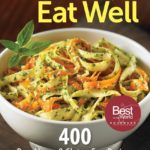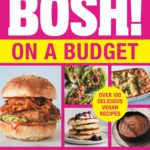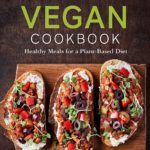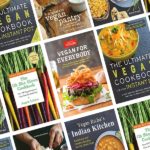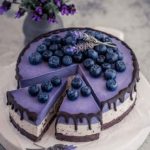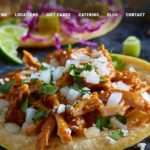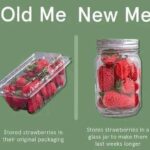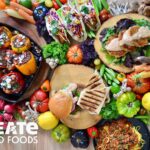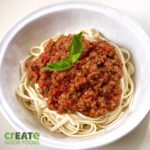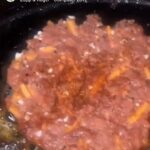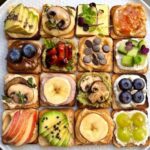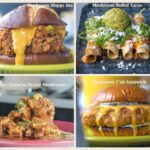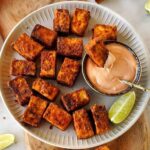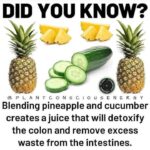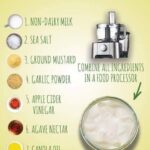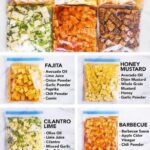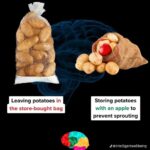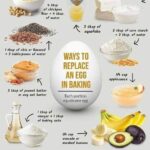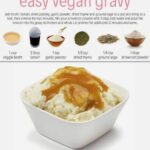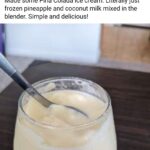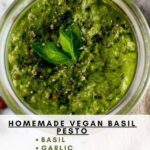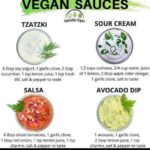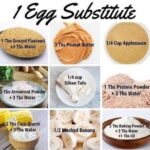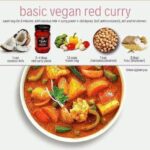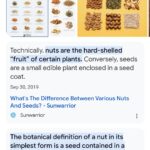This is also known as “Cooking Class” or “Home Ec’ (Economics)” in some human (Outlands) schools.
–
Table of Contents:
- Introduction
- Progression
- Vocabulary
- Basic Principles
- Advanced Cooking
- Recipes of Our Restaurants
- Recommended/Required Reading (Images Begin)
- Conceptual/Presentation Images
- Recipe-memes, Etc.
- Nyotaimori
- Recipe Videos
–
Introduction:
They say “the kitchen is the heart of the home”, and we here in Inisfree have gone to great lengths to make sure that every kitchen in this home-realm of ours is as good as it gets. By the time you leave this course, you’ll know how to cook just about every kind of meal you could ever dream of wanting for yourself. Also, as always here in Inisfree, we have veganized everything –if it wasn’t naturally vegan already.
–
Progression:
Students here first learn the basics; cooking terms and utensils (only for vegans, of course), then simple recipes which they practice making, and finally chef “flare” and presentations (such as nyotaimori).
- vocabulary (of food, drinks, ingredients, crops, cooking tools, cooking processes, etc.) plus the origins of those words’ roots
- basic principles (such as why we only allow vegan in our realm) and techniques for healthy ingredient selecting, cooking, plating (or serving nyotaimori; all female students take their turn getting naked and having food arranged atop their chest and thighs), and preservation/refrigeration
- advanced cooking such as sous vide, molecular gastronomy, veganizing dishes/recipes, determining which healthy things will produce similar or even virtually identical tastes to whatever is being improved/veganized, etc.
- ServSafe certification/s
Graduates of Inisfree’s cooking classes know not only how to make decent meals, but the best meals. They have hands-on experience to rival that of line-cooks and world-class chefs. They even understand where the best ingredients come from, how to manage a small kitchen, and what molecular gastronomy is.
…
Earning a version of the BeVeg certification becomes possible for graduate-students of this course.
- “BeVeg is the most Internationally accepted and recognized vegan certification trademark.”
- For reference: further reading
–
Vocabulary:
Food Vocabulary:
- after-taste
- bland
- bitter
- broth
- cheesecake
- cook vs chef: A cook uses preexisting recipes.
A chef modifies recipes or even makes entirely unique ones.
“To simply answer this question, a chef is an individual who is trained to understand flavors, cooking techniques, create recipes from scratch with fresh ingredients, and have a high level of responsibility within a kitchen. A cook is an individual who follows established recipes to prepare food.” - curry
- custard
- cutlet
- dal
- Danish
- Dutch Baby (bowl-shaped pancake)
- filet
- frosting (thicker than icing, and tends to stay spreadable)
- gravy
- hoagie
- hors d’oeuvres
- icing (thinner than frosting, and sometimes hardens as it dries)
- lasagna
- meringue
- muffuletta
- poached
- quiche
- rich
- roast
- salty
- sauce (and examples; alfredo, barbecue, cocktail, honey mustard, horse radish, hot, marinara, pasta, soy, taco, tartar, etc.)
- savory
- scrambled
- sits well
- spicy
- soup
- sour
- stew
- stuffing
- sub
- sweet
- taco sauce
- tart
- topping
- whet
Drinks Vocabulary:
- alkaline
- carbonated
- champagne flute
- cider
- club soda
- cocoa (hot chocolate)
- cocktail glass
- creamy
- juice
- meal replacement
- milk
- reverse osmosis
- smooth
- smoothie
- sparkling
- spring (water source)
- tap
- tea
Ingredients Vocabulary:
(not because all of these should be ingredients, but in order to discern if a product has harmful ingredients)
- acidity regulator
- anti-caking agent
- batter
- citric acid –questionable; sometimes derived from black mold
- cream –fine if coconut, for example; as long as it is vegan
- essence
- (food colors) –sometimes chemical coloring; unhealthy/unnatural
- fructose
- granulated
- herbs (see this webpage for a complete list)
- iron (i.e. that it should not be an ingredient; no one needs iron powder in their food)
- lactic acid –bad
- monosodium glutamate (MSG) –debatable, but generally regarded as unfit for consumption
- natural flavor/s
- non-GMO
- nuts (ground vs tree, etc.)
- organic
- preservative –few things need this if in the ideal environment
- sodium benzoate (a carcinogen; never include/ingest)
- sucrose –or other sugar alternatives
- vitamin D –sometimes extracted from pig flesh; never allow
Crops Vocabulary:
- aubergine
- canola (vs healthy/normal cooking-oils)
- clove
- ear of corn
- eye of potato
- head of cabbage
- husk
- shallot
- tuber
Cooking and Dining Tools:
- air fryer
- baking sheet/tray
- blender
- bottle opener
- bread bin
- bread knife
- bread maker
- butter knife
- can opener
- cheese cloth (for tofu)
- cheese knife
- colander
- corkscrew
- crock pot (for slow cooking)
- cutting board
- deep fryer
- draining spoon
- foil
- food thermometer
- garlic crusher
- grater
- grill
- heating drawer
- hot pad
- ice-cream scoop
- kettle
- ladle
- measuring cup/s
- measuring spoon/s
- microwave
- microwave-safe
- mixing bowl
- non-stick
- nutcracker
- oven
- oven mitten
- ovenproof
- pairing knife
- pan
- pasta server
- peeler
- pizza cutter
- pot
- potato pusher
- pressure cooker (for fast cooking)
- rice cooker
- rolling pin
- rotisserie
- scissors
- serving spoon
- sieve
- slotted spoon
- slotted turner
- solid turner
- spatula
- stove
- tea strainer
- tea towel
- tofu press
- tongs
- vacuum sealer
- watermelon slicer
- wax paper (baking parchment)
- wine-bottle opener
- whisk
- zester
Cooking Processes:
- air-fry
- al dente
- bake
- baste
- beat (beaters)
- blanch: a cooking technique that calls for quickly scalding foods in boiling water, and then immediately dunking or “shocking” them in ice water to keep them from overcooking. The process seals in color, flavor, and texture by halting the enzyme activity that occurs naturally in fruits and vegetables when raw.
- blend
- boil
- braise
- broil
- caramelize
- deglaze
- dice
- emulsify
- fillet
- flambé
- freezer burn
- fry
- garnish
- glaze
- grill
- grind
- julienne
- marinate
- mince
- mise en place
- parboil
- plate (plating; presenting) –such as on a ‘living platter’; nyotaimori
- poach
- preheat
- puree
- reduction
- roast
- roux
- sauté
- sear
- simmer
- slice
- steam
- stir
- temper
- thaw
- whip
- whisk
–
Basic Principles:
Why we only allow vegan in our realm:
- against harming any innocent or defenseless sentient being, whether it is regarded as relatively sapient or not
- compassion for those who deserve it
- endless proof that only the vegan diet leads to / maintains health
- karma
- love for developing peaceful solutions to the ridiculously complex/complicated and pointlessly-violent/-harmful nonvegan way/industries
- vegan products are almost always superior in many, if not all, ways when compared to nonvegan alternatives/firsts
- zero reason to be nonvegan, especially with all we have learned/found and demonstrated
Techniques for healthy ingredient selecting:
- electrodermal screening; finding your own best diet (as opposed to assuming the nonsensical Food Pyramid taught by corrupt schools cowing down to a government lobbied by entrenched “food” industries works for everyone)
- knowing ingredient legislation; inappropriate intentionally-misleading terms/pseudo-synonyms/codewords
- what actual food ingredients should be
- how to determine if something is actually organic and healthy, not just labeled that way
- which farms and farming practices are legitimate/healthy
- ways you can test groceries for true ingredients; sometimes those listed are not that accurate
- where to find natural ingredients you can harvest (in the wild) or plant and grow yourself
- plant –and plant health/disease– identification
- our recommended encyclopedic knowledge of edible/useful herbs and other plants
Cooking:
- chilling
- food-prep’ in general
- pressure-cooker safety considerations/checks
- staging; mise en place
- timing completions to align for plating and serving
Plating (or serving nyotaimori):
- artful arrangements based on color/contrast, which things stack well, etc.
- nyotaimori; arranging food that is neither hot-to-the-touch or chilling/cold atop a naked female model’s chest and thigh-fronts
- which type of dish/plate is for which type of food/presentation
Preservation/Refrigeration:
- containers that are food-safe
- food-covers that are food-safe
- refrigeration; refrigerator and freezer types and settings
- walk-in freezers and refrigerators
–
Advanced Cooking:
- “a cooking technique that involves vacuum-sealing food in a bag and cooking it in a precisely regulated water bath.”
- “the scientific discipline concerned with the physical and chemical transformations that occur during cooking. The name is sometimes mistakenly given to the application of scientific knowledge to the creation of new dishes and culinary techniques.” IOW: This is a branch of food science that focuses on already-established/-discovered aspects of different ingredients during the processes of different recipes; we are not adding recipes or cooking methods, but helping students in Culinary Arts understand much more about existing ingredients, recipes, and techniques.
- IOW: what will cause different ingredients to change colors, consistencies, flavors, etc., making them suitable in combinations, structures/layering, etc.
Veganizing Dishes/Recipes:
(Everything we teach is vegan, but we start with easy recipes which were already vegan, then progress to knowing how to easily veganize any nonvegan recipe you might encounter in the Outlands or remember fondly from a pre-vegan childhood.)
- all the things which can be made into vegan bacon
- all the things which make great egg replacers
- mushrooms as chicken or steak replacers
- plant-based milk-like beverages/liquids
- vegan cheeses
- vegan gravies
Determining which healthy things will produce similar or even virtually identical tastes to whatever is being improved/veganized:
- BBQ flavor sources
- nutritional yeast
- umami/seafood flavor sources
- and we never use artificials/chemicals; only natural normal ingredients that you can grow and harvest yourself
Acupuncture-related:
- choosing ingredients and recipes or food-preparation types/techniques based on a patient’s current energy/chi-needs
–
Recipes of Our Restaurants:
We’ll teach you how to make all of your favorites from all of Inisfree’s restaurants.
Appetizers:
- Baked Battered Zucchini Wedges (not fried)
- Boneless Wings
- Coconut-crusted Shrimp
- Dips
- Flat-bread
- French-bakeds with Sprinkled Feta (a.k.a. ‘Greek-fries’, instead of French-fries)
- House-made Guacamole
- Jalapeño Poppers
- Mini Tamales
- Pop-overs
- Potato Skins (loaded)
- Salads
- Salsas
- Sampler Platters (pick your own combinations)
- Sliders
- Soups (by the cup)
- Stuffed Mushroom Caps
Main-course Menu:
- Burgers (veggie patty options on giant pretzel buns)
- Cheeses by the Block and Wheel! (with a great rotating-wheel melting-&-spreading option)
- Chicken Noodle Soup (with wedges from whole chicken breasts, never little clumps like you find in the canned soup of the Outlands)
- Couscous
- Crab Cakes (big ones always, and never with anything crunchy in them)
- Crêpes (choose your toppings; my favorite is finely shredded cheddar)
- Croque Monsieur
- Curries (pick your spiciness)
- Dolmas
- Earth-tones Bread-weaves (like Challah but with more colors; brown, tan, and white)
- Kabobs
- Lettuce Wraps
- Mushroom-bun Burgers (with the Juicy Lucy option; melted cheese on the inside)
- Mushroom-patty Burgers (with the Juicy Lucy option; melted cheese on the inside)
- Omelets (choose your fillings, egg-white base is optional, “JUST” vegan egg-like mix is the norm, and a vegan gyro filling is now available)
- Paleo Pizzas (including the thin-crust chicken, sweet corn, and light curry spice one from the Polish Italian restaurant in Scotland –dipping sauces include cilantro mint chutney)
- Pancakes (with infusion options, such as with chocolate chips or turkey bacon)
- Pesto Pastas
- Pot Roasts
- Ribs (the lamb ribs with mashed potatoes infused with garlic and feta, of Axios in Denver)
- Rice Bowls
- Sandwiches (on giant pretzel buns and other breads)
- Soups (by the bowl, including a variety of Pho –with brown rice in creamy tomato soup added in 2022)
- Stews (by the bowl)
- Stingray Steaks
- Stuffed Bell Peppers
- Swordfish Steaks
- Tamales (no-lard, made with masa, and a Salvadorian plantain-husk with olives option)
- Tofu Pot Pie
- Vegan Shepherd’s Pie
- Vegetable Chili with Broccoli-cheese Soup, Beet Crackers, and a Milk Chocolate
- Vegetables Tray with Hummus
New Sandwich of 2022: Smoked Tofu Panini; with portabella mushrooms, spinach, vegan goat cheese, chipotle aioli, on ciabatta, with garlic fries and slaw
Drinks:
- almond milks (such as with chocolate)
- blends
- coconut drinks (juice, water, with or without pulp, and sometimes served in the actual coconut)
- every juice there is (all natural, nothing added, pulp included, with mixes optional)
- flavored waters (always via only natural juices)
- floats (have them made from any of our many ice-cream flavors)
- horchata
- lemonade
- limeade
- rice milks
- shakes (have them made from any of our many ice-cream flavors)
- smoothies
- teas (hundreds of kinds, all listed and described)
- water (the purest you will ever taste)
Desserts:
- Cheesecakes (as many as are available at The Cheesecake Factory)
- Chocolate Fondue Fountain
- Gelatos (dozens of flavors)
- Lava Cake
- Mille-feuille (‘Napoleon’)
- Oreo-crust Ice-cream Pie
- Pastries (such as Bear Claws; almond-paste filled and icing drizzled)
- Pies (all the classics: apple, chocolate, pecan, pumpkin, and sweet potato; my favorite)
- Whole Watermelons (sliced or sculpted)
2024/+: Being Considered/Reviewed
- Harissa paste/sauce
- Plantiful Plate recipes
- V-Spot menu
–
Recommended/Required Reading:
All of these books will be available via our libraries.
Also:
- Its All About Plantz & Mushroomz
- Scrappy Cooking
- Vegan Mob
- 2024 May: my very own cookbook; “Auz’s Favorite Recipes“: all my favorite vegan recipes discovered and tried at home over the years –There are no paragraphs introducing the recipe, rambling about how amazing it is or where I discovered it; just the recipes and great presentation photos, as well as photos of each major step of each recipe.
–
Conceptual/Presentation Images:
–
Recipe-memes, Etc.:
–
Nyotaimori:
–
Recipes:
Also see:
- ginger two ways
- pizza sauce of carrot chili
- looks like hummus
- harissa-agave pockets
- 3 egg substitutes
- purple potato tortilla crepes
- ranch – TurnipVegan
- TurnipVegan’s Anaheim-pepper cheese
- poptart, TurnipVegan
- poboy, TurnipVegan
- 3 cheese alternatives, TurnipVegan
- TurnipVegan: replace fish or shrimp with Lion’s Mane, replace fish with jackfruit or banana-blossom
- waffle sandwich, TurnipVegan
- kabobs on rice yellow small bowl presentation
- Bosh’s “turkey”-jackfruit loaded fries
- Chipotle mayo from not eggs but olive brine (by Turnip Vegan)
–
